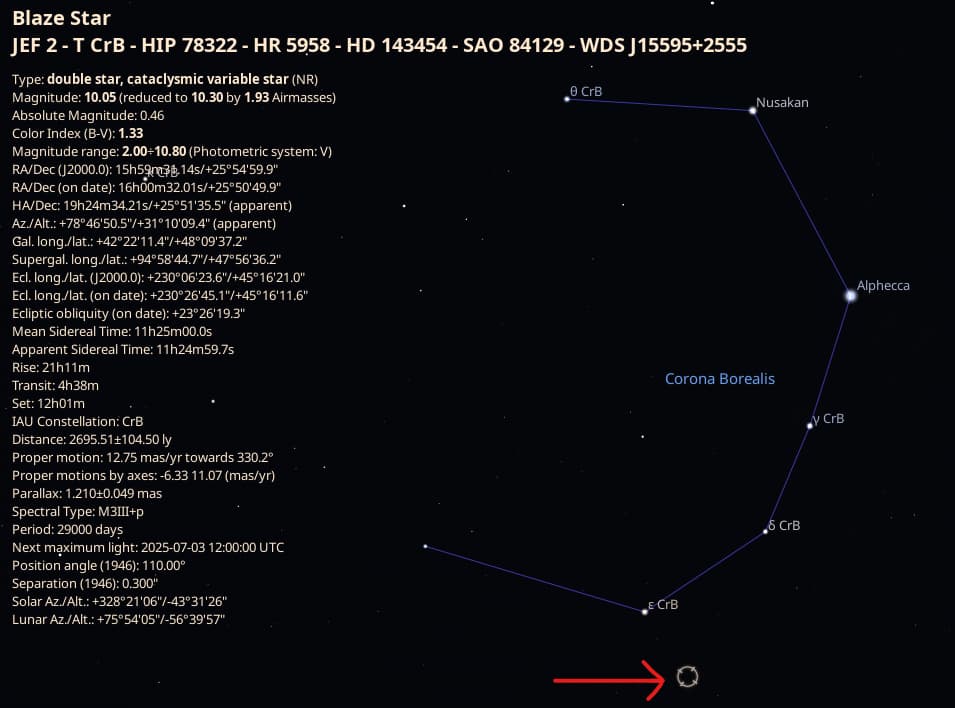The “Cataclysmic Variable” star T Coronae Borealis (T CrB) is due for a spectacular explosion this year as part of an ~80 year repeating cycle. (NASA article link-out here.) If you’ve ever wondered what the “regular” nova counterpart of a supernova is, this is your chance to observe one with the naked eye. It won’t be visible in the daytime like some spectacular supernovae can be, but the explosion will bring the double star from a magnitude of 10 up to 2, making it similar brightness to Polaris. You’ll find T CrB in the constellation Corona Borealis, just a couple minutes of RA & Dec. South-East of Epsilon Coronae Borealis. (See red arrow in pic below).
When a white dwarf stellar remnant remains in very close orbit with a binary partner, it can attract and accrete material from its main-sequence or giant companion star, forming a thin atmosphere around the white dwarf. As most of the accreted material is hydrogen, it’s only a matter of time before the gas is heated to a critical temperature that ignites in a runaway fusion event, producing a spectacular burst of energy and light.
According to Wikipedia, T CrB has been witnessed going nova in 1886 and 1946. Changes in brightness were recorded from 1938 through 1945 prior to the 1946 explosion, and astronomers believe that pattern has been displayed again between 2015 and 2023. This indicates T CrB is due for a nova explosion any time between now and September 2024.
If you’re finding this white dwarf astrophysics interesting, here’s (article, paper) another recent finding about metallic deposits measured across the face of a different white dwarf, thought to be the remnants of a planet that collided with the stellar remnant.

